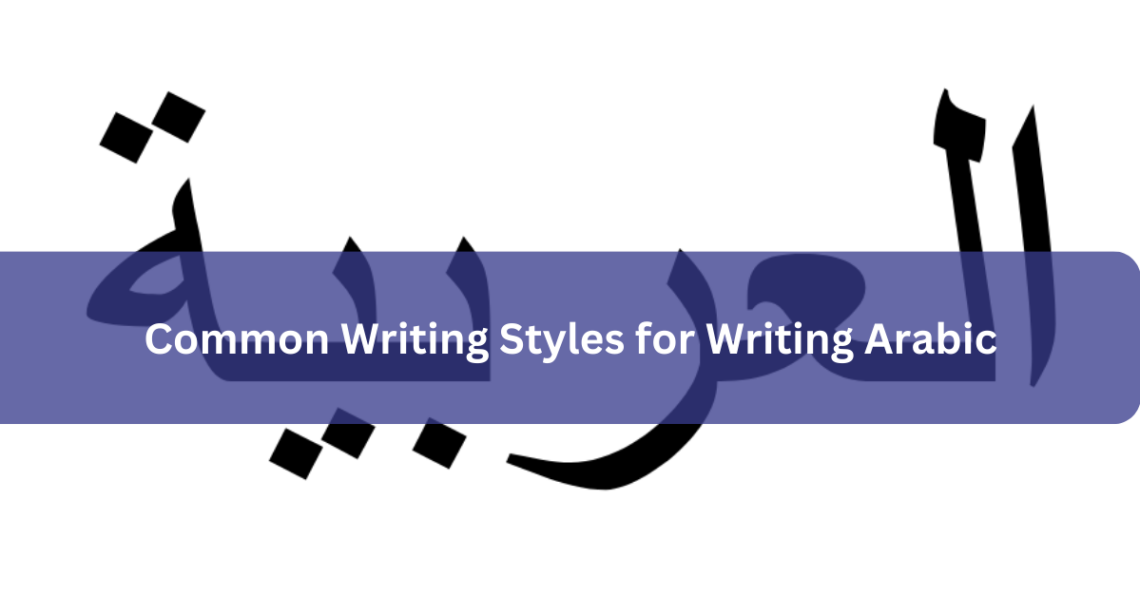
Common Writing Styles for Writing Arabic
Arabic is a rich, ancient language celebrated for its intricate calligraphy and diverse writing styles.
Understanding the Arabic alphabet and different writing styles can help you improve your written Arabic communication skills. Here are the popular Arabic writing styles and their unique features:
Kufic
Kufic is one of the oldest Arabic writing styles, initially developed in the city of Al-Kufa in Iraq. This calligraphy style uses angular, geometric shapes to write the Arabic alphabet. People often used Kufic to write inscriptions on monuments, architectural structures, and coins.
Kufic was also a popular writing style for early copies of the Quran. Its spaced-out typography makes Kufic easy to read and write, which was helpful in the pre-printing era.
Diwani
Diwani is a cursive, decorative writing style with fluid lines demonstrating an artistic flair. Originating from Ottoman Turkey, this cursive writing style was popular in official documents of the Ottoman Empire and legal correspondence.
This ornate style is characterized by its sweeping curves and elaborate loops, creating a visually striking and expressive form of writing. Today, people use Diwani for wedding invitations, certificates, and greeting cards.
Naskh
Naskh is a widely recognized Arabic calligraphy style that has been in use since it was developed in the seventh century. Naskh comprises evenly spaced letters and distinct, well-defined shapes, making it easy to read and comprehend.
This Arabic writing style has a clean and modern aesthetic that is suitable for digital media and publications. Due to its simplicity and legibility, printers use Naskh for newspapers, books, religious texts, and official correspondence.
Thuluth
Thuluth draws its name from its size, which is a third of the size of other contemporary writing styles. Thuluth calligraphy features a combination of curves and straight lines, which give it a cursive flow. Due to its decorative aesthetic, Thuluth was used to write manuscripts and inscriptions on architectural structures. You can also find Thuluth on tombstones and ceramics.
Riq’a
Riq’a calligraphy contains some elements of Thuluth but with a rounded form and shorter horizontal lines. Riqa is a practical writing style suitable for everyday uses such as note-taking and casual correspondence. Its straightforward and unadorned appearance makes it accessible to language learners. It is an efficient style for quick writing tasks. While Riq’a is not as decorative as other styles, its practical nature makes it a good script to learn for day-to-day written communication.
Muhaqqaq
Muhaqqaq is a flowing style commonly used in religious texts. You may also find Muhaqqaq on inscriptions for book covers and monuments. Muhaqqaq is made up of elongated letters with sweeping curves that give it an ornate appearance. Like other Arabic writing styles, Muhaqqaq uses the contrast between thick and thin strokes to create rhythm and balance in written language.
Learn To Write the Arabic Alphabet
Arabic calligraphy is a dynamic art form that reflects the cultural and historical richness of the Arabic language. Each Arabic writing style has its own unique characteristics and cultural significance. Learning how to write the Arabic alphabet in Naskh, Diwan, and other writing styles can help you further explore the complexities of the Arabic language. Contact an Arabic language learning institution today to register for an Arabic writing course.
You May Also Like

rajkotupdates.news-a-ban-on-fake-youtube-channels-that-mislead-users-the-ministry-said
May 24, 2023
How Does Enterprise Content Management Software Help Beyond Just Storing Documents?
December 19, 2023

